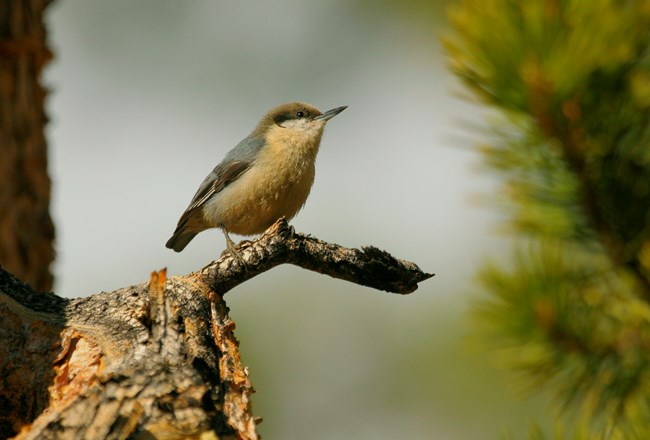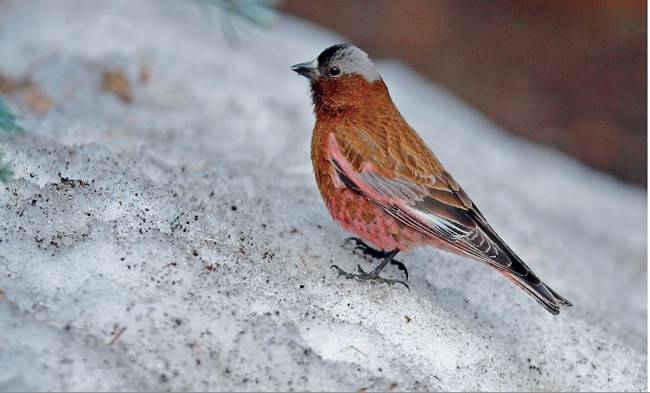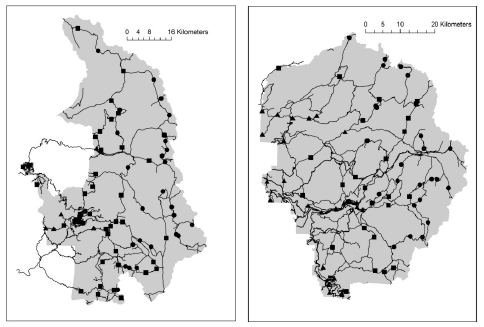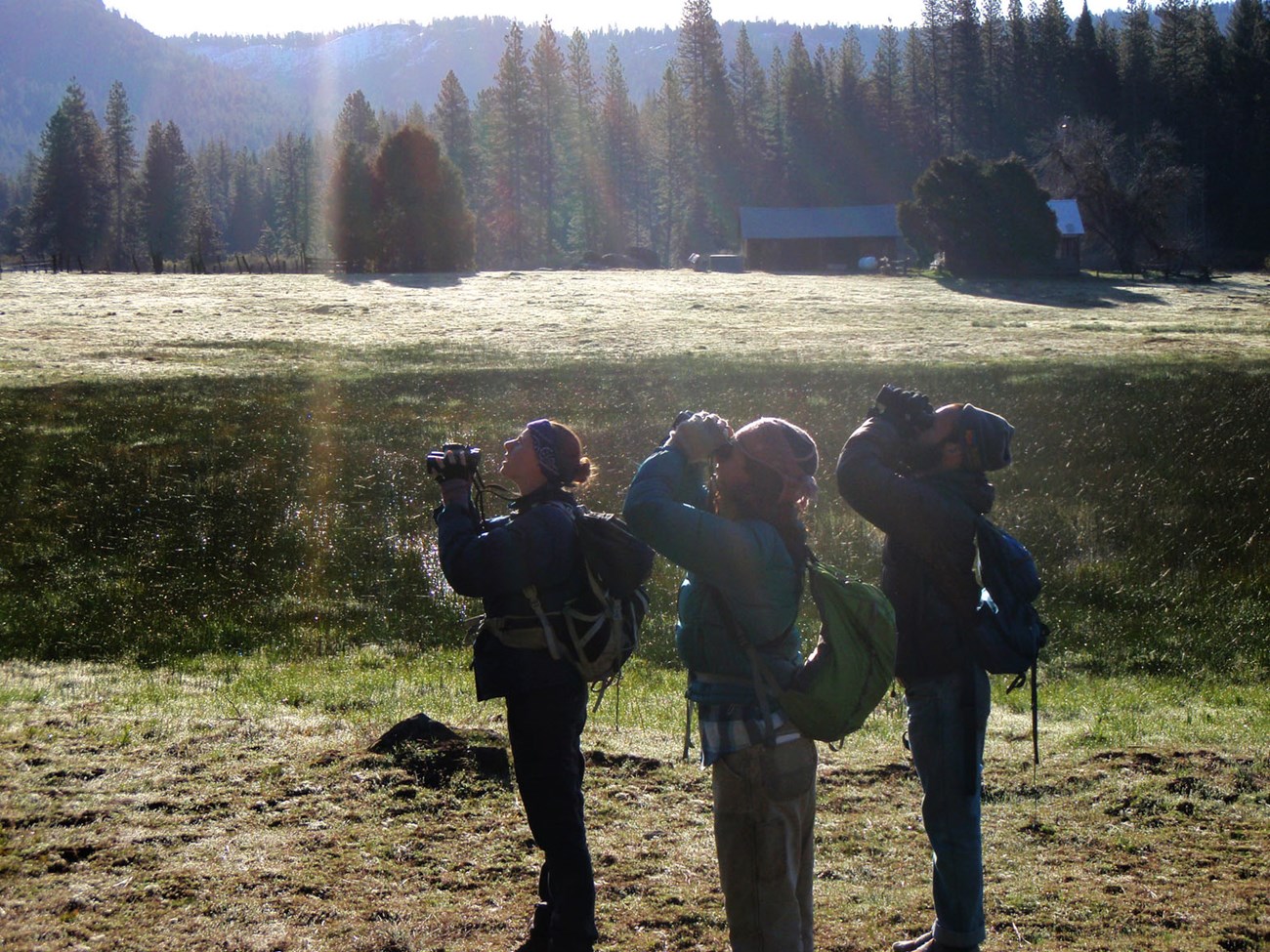Last updated: May 3, 2024
Article
Monitoring Birds in Sierra Nevada Network Parks

Photo: Gary Lindquist
Background
Sierra Nevada Network (SIEN) parks -- Sequoia and Kings Canyon National Parks, Yosemite Natinoal Park, and Devils Postpile National Monument provide over 1,600,000 acres of habitat, ranging from gently sloping foothill grasslands up to windswept alpine wetlands and peaks. While none of the approximately 200 bird species that breed, winter, or migrate through the Sierra Nevada are endemic to the range, the key to its exceptional bird diversity is its extreme elevation gradient and corresponding habitat diversity––the Sierra Nevada supports the most diverse assortment of terrestrial habitats and birds of any bioregion in California.In recognition of the Sierra Nevada’s bird diversity and critical breeding, stopover, and wintering habitats, Sequoia, Kings Canyon, and Yosemite National Parks, and a few other large areas in the Sierra Nevada, have been designated by the American Bird Conservancy as “Globally Important Bird Areas.” The Sierra Nevada Network Inventory & Monitoring Program and The Institute for Bird Populations have worked together to develop and implement a bird monitoring program, initiated in 2011 for all SIEN parks

Photo: Gary Lindquist
Importance
Birds are particularly good indicators of change in terrestrial ecosystems. Their high body temperature, rapid metabolism, and prominent position in most food webs make them good indicators of local and regional ecosystem change. Birds contribute substantially to animal diversity, representing more than 60 percent of the total number of vertebrate species in SIEN parks, and are a major focus of interest to park visitors and the general public.SIEN bird populations are affected by various stressors, both largescale stressors such as climate change and air pollution, and more localized effects such as altered fire regimes and non-native species invasions. Park birds also rely on migration stopover sites and wintering grounds outside the parks, many of which are being rapidly altered by development, logging, agriculture, and water diversions.
Birds and Climate Change
As the Sierra Nevada’s climate changes, increased temperature, decreased snowpack, altered fire regimes, and plant community shifts will likely alter the ranges of Sierra bird species and restructure bird assemblages. Mountain-dwelling birds have already responded to climate change in many parts of the world by shifting their ranges upslope, and similar changes may already occurring in SIEN parks.Siegel et al. (2014) did a climate change vulnerability assessment of 168 bird species that breed in the Sierra Nevada. Only one species not native to the Sierra Nevada, White-tailed Ptarmigan, received the most vulnerable rank, Extremely Vulnerable. No species ranked as Highly Vulnerable, but sixteen species scored as Moderately Vulnerable. Species associated with alpine/subalpine habitats and aquatic habitats received significantly more vulnerable rankings than birds associated with other habitats. In contrast, species of foothill, sagebrush, and chaparral habitats ranked as less vulnerable than other species, and may respond to climate change with population increases or range expansions.
The parks serve as important ‘reference sites’ for assessing the effects of climate change and land use changes on bird populations throughout the Sierra Nevada, as national parks are among the few sites in the United States where population trends due to large-scale regional or global change patterns are relatively unconfounded by local changes in land use.

Monitoring
During May through July (bird breeding season) field crews capture information on bird distribution and abundance, conducting point counts along mile-long transects randomly located along the parks’ trail systems in Sequoia & Kings Canyon and Yosemite (Figure 1). At the much smaller Devils Postpile National Monument, a grid of points is monitored each year. At regular points along these transects or in the Devils Postpille grid, the birders document every bird seen or heard within a 7-minute time frame. They also record information about the habitat and vegetation. The birders must be at transect starting points by sunrise when birds become active, singing to defend territories and foraging for food.Monitoring Objectives are to:
- Detect trends in the density of bird species that are monitored well by point counts, in accessible areas during the breeding season.
- Track changes in breeding-season distribution of bird species throughout accessible areas of SIEN parks.

Yosemite National Park.
Photo: Alice Chung-MacCoubrey
Management Applications
Bird monitoring data assist parks in addressing the following information needs, ranging from declining species to stressor responses, planning, and education or outreach programs:- Birds are sensitive indicators of habitat health, and monitoring data provide information about declining species and their habitats.
- Identifying bird population trends can help identify needed research projects to improve understanding of biological responses to stressors.
- Bird monitoring data are valuable to park Natural Resource Condition Assessments and Resource Stweardship Strategies. Birds extend across all park habitats, are indicators of park condition at an extensive spatial scale, and provide a basis for other ecosystem-level investigations.
- Birds are the most familiar and widely enjoyed wildlife in America. These data will provide readily interpretable stories to share with the public and can be used to help inspire involvement in numerous citizen science opportunities.
More Information
Rodney Siegel, PhDThe Institute for Bird Populations
Email: rsiegel@birdpop.org
Phone: 415-663-2051
See an article about our first trend report on this project: Bird Population Trends in the Sierra Nevada Network, 2011-2019
